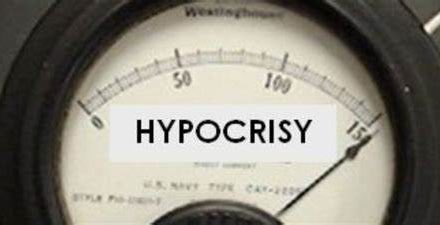
This post is written by Jimmie Covington, veteran Memphis reporter with lengthy experience covering governmental, school, and demographic issues. He is a contributing writer with The Best Times, a monthly news magazine for active people 50 and older. This article was published there
By Jimmie Covington
With a financial liability pending for creation of a fund to pay $1.1 billion in future insurance benefits for former Memphis City School System employees, the city’s attorney and mayor contend that city taxpayers bear none of the responsibility.
Regardless of what this group or that group of officials says, it seems likely that the decision will be made by state government and/or the courts.
And it also seems clear that City Council members and a Memphis school board majority did not make a thorough study of the history of public schools in Tennessee and Memphis before the council members decided in 2008 to cut city funding for the schools and before the school board voted in 2010 to surrender the system’s charter.
A review of the history shows that Memphis city government formed city schools in 1848 after a change in the city charter allowed it to do so.
And historians and others writing about schools tell of how city officials along with “school visitors” they had appointed as advisers to assist in running the schools agreed to ask the state legislature to give the school district its own charter. Other community leaders may also have been involved in the decision.
School Charters
The first school charter was approved for Memphis schools in 1856. That charter allowed the appointment of a school board to run the schools while leaving the raising of revenue and approval of budgets in the hands on the city’s Board of Aldermen. A second charter in 1858 allowed the board members to be elected by the public.
There was a third charter in 1866 and a fourth in 1869. That fourth charter, with amendments through the years, lasted until March 2011, when Memphis voters approved the charter surrender and a shift of city school operations to the county school system. That’s the first time in history that Memphis schools became a part of the county district.
(The Memphis system, since it was shifted in its infancy from the city’s charter to a separate charter, came to be classified as a special school district.)
It is apparent from the historical accounts, the request for a separate charter was made to get the city’s aldermen out of the conflicts and duties of running day-to-day school operations.
No attempt was made to avoid funding the schools. In the beginning, the city government provided all or virtually all of the funding. There was little if any state funding for public schools, particularly during the Civil War and its aftermath. The state did not authorize counties to provide funding for schools until after the war almost 20 years after the first public schools were opened in Memphis.
And according to historical information, the first public schools in Shelby County outside Memphis were not opened until the early 1870s more than 20 years after public schools, or “common schools” as they were called in the early days, were opened in Memphis.
Opportunity Lost
In a 2008 book, Rhodes College Professor Marcus Pohlmann provides a good account of the development of the Memphis school system. The book is entitled “Opportunity Lost: Race and Poverty in the Memphis City Schools.”
Among his findings is this: “The Constitution of the State of Tennessee delegates to the state legislature all authority to establish and regulate public education. “Yet, the legislature generally did not create schools and impose their creations on the state’s localities. Either local legislatures or community committees normally would develop a school and petition the state for the authority to create their schools.”
“The state legislature then had the option of delegating legislative authority to the county or municipality involved to create whatever academic administrative agencies they saw fit.”
That’s obviously what happened in Memphis. The city’s officials and community leaders developed a school system and gained legislative approval for it. There were no patterns to follow at the time and Memphis officials pursued the courses that were most comfortable to them in developing schools for the city’s children.
Shelby County’s District
One of the sources Pohlmann used is a 1946 University of Chicago doctoral dissertation by David Moss Hilliard entitled, “The Development of Public Education in Memphis, Tennessee. 1848-1945.”
The dissertation, which can be found in the Memphis Public Library and University of Memphis McWherter Library, is a basic document for any major research into the history of Memphis public schools. Jimmy Hayslip, who retired in 2000 after 16 years as the Shelby County school system’s communications director and many years before that as a county principal, has done more than any other person to research and preserve the county district’s history. His boss, county Supt. Ward Harvey assigned him that task.
Hayslip has a list of what he says are “unique accomplishments” of the county district’s schools despite low funding from the state and county governments.
He dates the county system from 1867 when the state legislature authorized counties to develop schools but he said research shows no county schools were actually opened here until the early 1870s.
Hayslip has a copy of a report that appeared in the Memphis Morning News on June 26, 1904. The report, by Maude Moore, the county’s public instruction superintendent during 1901-04, outlines the early schools in the county system.
She said school commissioners reported in January 1871 that they had had difficulty in organizing schools because of the apathy of parents and the lack of suitable buildings for schools but that one school was set to open on Jan. 16, 1871, and “another was in the process of organization.”
Moore also said that on July 1, 1871, school commissioners of the 17th District reported that $544.20 had been received from the county trustee for school purposes. This was apparently county money and may be the first or at least some of the first county money provided for schools here.
Superintendents Emerge
A Tennessee guide on education that can be found in a Roosevelt New Deal collection that was compiled during the Depression includes this description of state action on schools right after the Civil War:
“While the Republicans controlled the state, the post of superintendent of public instruction was created, county superintendents were appointed, school taxes were levied and special schools for Negroes were put in operation. As soon as the Democrats returned to power, in 1869, these measures were repealed. In 1873, however, the legislature passed bills which substantially incorporated the earlier measures.”
Other accounts say the plan for using a county pattern for naming school officials and authorizing county funding came from approaches in use in a number of Northern states.
From the start of authorizing counties to collect taxes for schools, Tennessee laws always directed that the county funding be divided among school districts already existing in the counties.
When the state legislature created the position of county superintendent of public instruction and other local school positions, it did not give those officials any authority over city, town or what came to be known as special school districts.
Confusing The Facts
Although it doesn’t seem to be directly stated anywhere, it appears that the role of the county school districts was to provide schools in those areas of a county which did not have public schools, which in the early years generally meant “country schools.”
When Memphis voters approved the charter surrender in 2011, the Memphis system was certainly one of the oldest public systems in Tennessee under a state charter. It may have been the oldest.
A statement made in 2008 by some city officials and an attorney that the county was solely responsible for funding city schools was not a valid statement. Some members of the news media picked up that statement and reported it as fact. The courts did not uphold that position.
No court ruling or state law has been presented that says county governments are responsible for the total local funding of city and special school districts within their borders.
Memphis city government created the Memphis school district, maintained a strong tie with it and provided financial support for 160 years. And then in 2008, a group of Memphis City Council members, many of them newly elected to office, decided they did not want to support schools in the city financially.
It appears that a fair approach for handling the insurance (or OPEB) liability would be for city, county and state taxpayers to share in the costs since all provided funding for the former Memphis school district.
However, that is not necessarily what the state may require or how the courts may rule.





Jimmie, I just read that the CA bought by Gannett, which bought the Ark Gazette when I was working for it – What are your thoughts about why and what it will mean for journalism there – I remember when I worked with you there 69-70 that I thought we had good editors and reporters but hasn’t the standards slipped n recent decades – Gannett didn’t seem to want to get to know LR that much, but rather applied its formula, which of course didn’t work – I’m retired, but am nterested in number of issues and might want to write about reporting using g’s purchase of the ca as entry into a number of elements – am most interested in your thoughts – William Green, who worked for the gazette 13 years before working a four-month stint at usa today before resigning from the gaz – hope all is well with you –
Will, There are few reporters remaining at The Commercial Appeal who have any extensive knowledge of the community. I think that years ago the editors decided not to cover a lot of the basic news of the community. In my early years, including the time you were there, and for about 10 or so years afterward the people who held the top editor’s job wanted reporters to go out and learn what they could, bring it back and the editors would get the news into the newspaper. After the newspaper drifted away from covering the what many of us considered to be the news, a reporter friend of mine, the late Jim Chisum, summed it up well when he told me that the people who ran the place were interested in stories rather than covering the news. The paper continues to do a good job of doing a number of investigative stories but on local government tax rates, pensions, budgets and a good many other things, including the surrender of the city school system’s charter, the reporters just quote what the politicians and governmental officials say.and really don’t have any understanding of what is actually going on. As weak as it is, I think it will get worse under Gannett. Hope this helps.